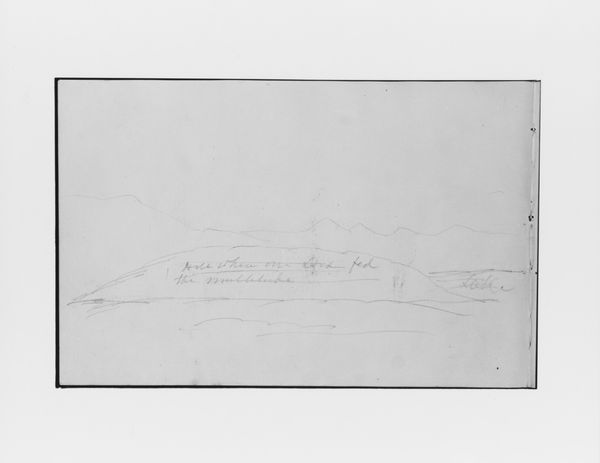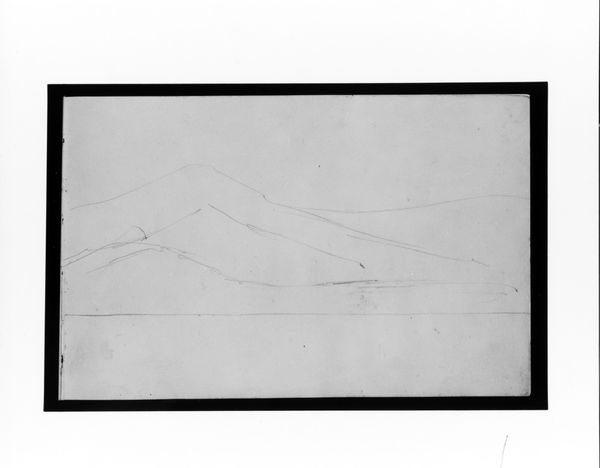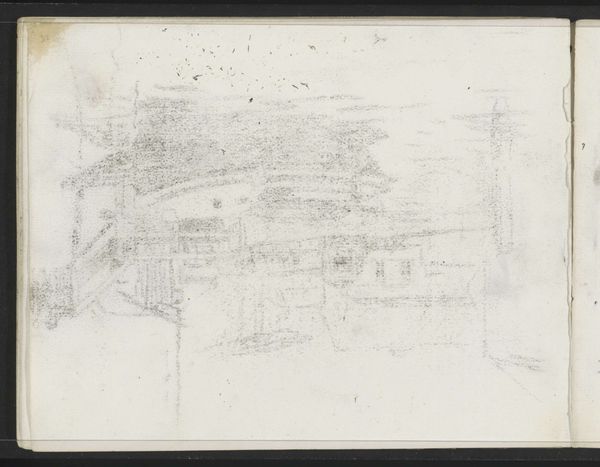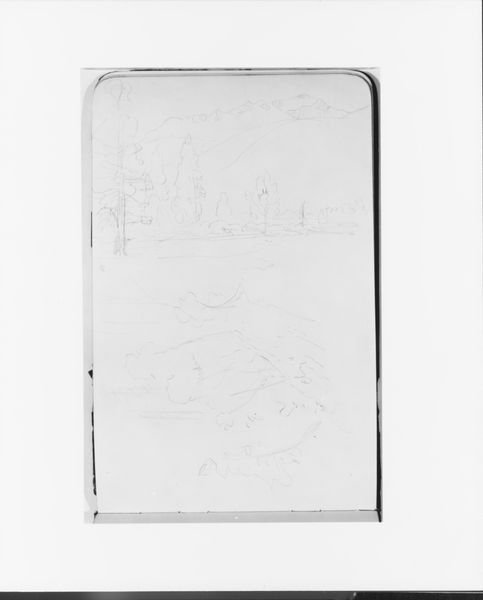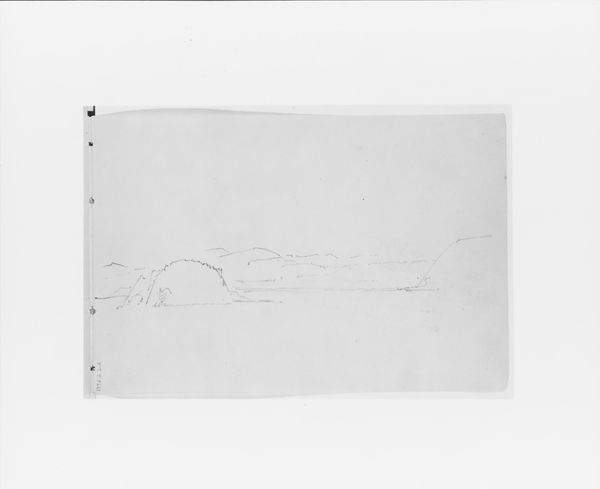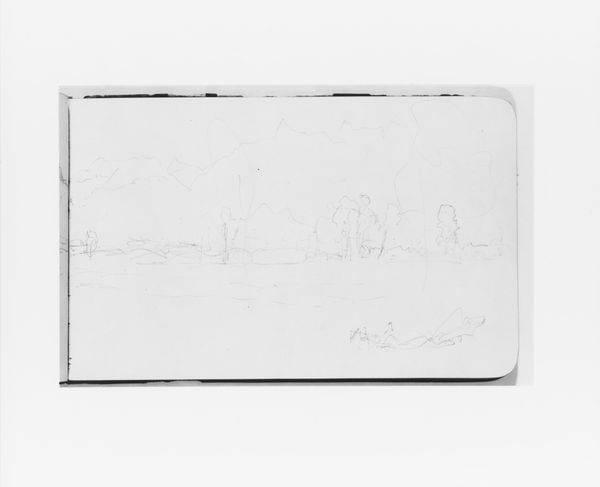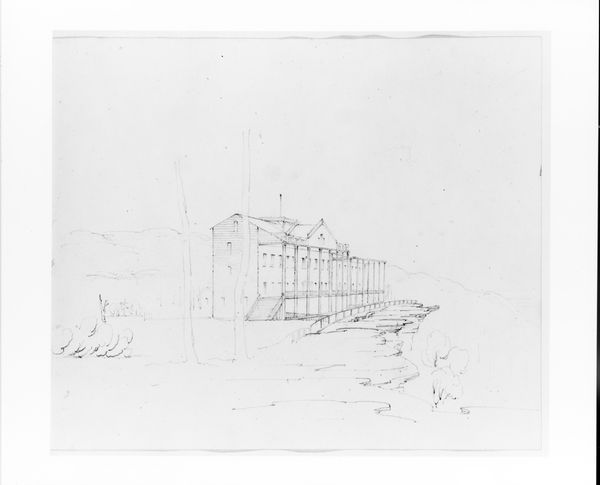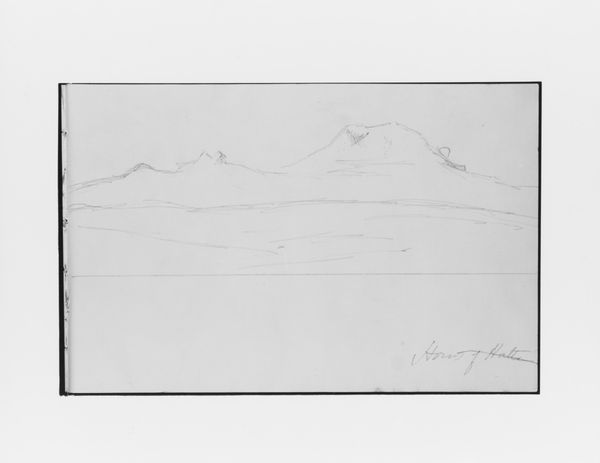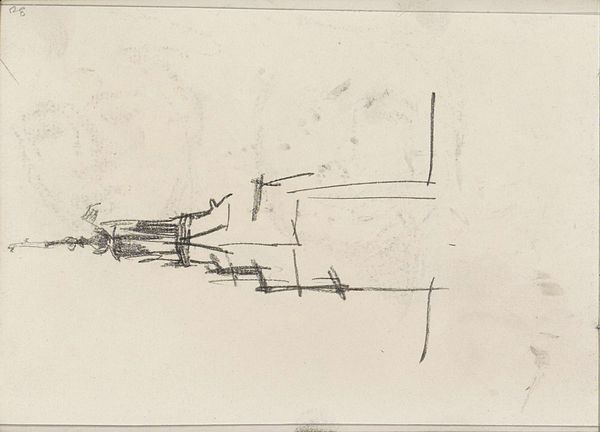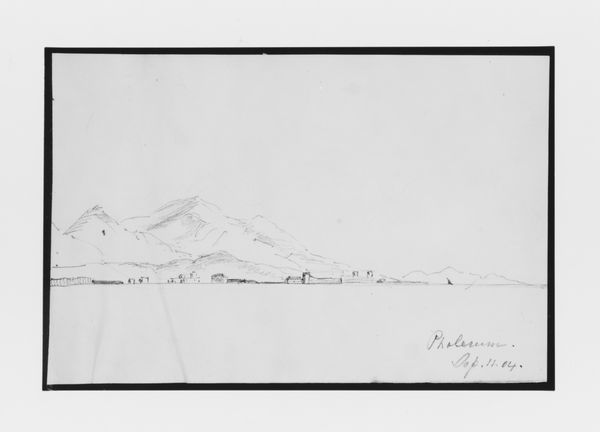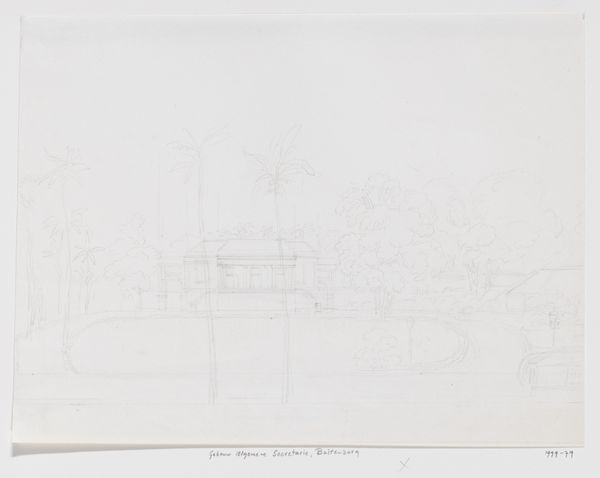
drawing, paper, pencil
#
drawing
#
landscape
#
paper
#
geometric
#
sketch
#
mountain
#
pencil
#
northern-renaissance
#
modernism
#
realism
Dimensions: 5 1/4 x 8 1/4 in. (13.3 x 21 cm)
Copyright: Public Domain
Editor: Here we have Mary Newbold Sargent’s "Village and Mountain" from 1904, a simple pencil drawing on paper, currently residing at the Met. It's incredibly minimal, almost ghostly in its lightness. What strikes you when you look at it? Curator: Immediately, I’m drawn to the process. Notice how the stark white paper isn't just a backdrop, but an active element. Sargent uses it to evoke a certain kind of emptiness, right? This impacts the relationship between the viewer, the landscape, and the means of production by showcasing the inherent limitations and choices within art-making. How does the geometric form relate to the labour of the architectural site? Editor: So, you're saying the very act of choosing pencil on paper tells us something about the artist's intention, beyond simply depicting a scene? Curator: Exactly. And consider the accessibility of the materials: pencil and paper. It points to a certain democratization of art making, wouldn’t you say? It shifts away from high art and brings art into a broader cultural discourse, emphasizing the material realities and socio-economic possibilities. How does that democratizing intent change your perception? Editor: That's an interesting point; I guess it challenges the preciousness we often ascribe to art. It’s almost like she’s emphasizing the everyday aspects, the labour even, behind building these villages, despite their picturesque appearance. It brings labor into the gallery. Curator: Precisely. By stripping down the materials and focusing on the geometric essence of the structures and landscape, she's almost commenting on the nature of art creation itself. Think of all the ways architecture reflects human labour. Do you feel her sketch successfully reflects this intention? Editor: Absolutely! This really changes how I view the drawing; it’s not just a landscape, but a study of materials, labour, and the social context that shaped the village. Curator: Indeed! It serves as a reminder of the intersection between artistic intention, the available materials, and broader cultural landscape of artistic creation.
Comments
No comments
Be the first to comment and join the conversation on the ultimate creative platform.
